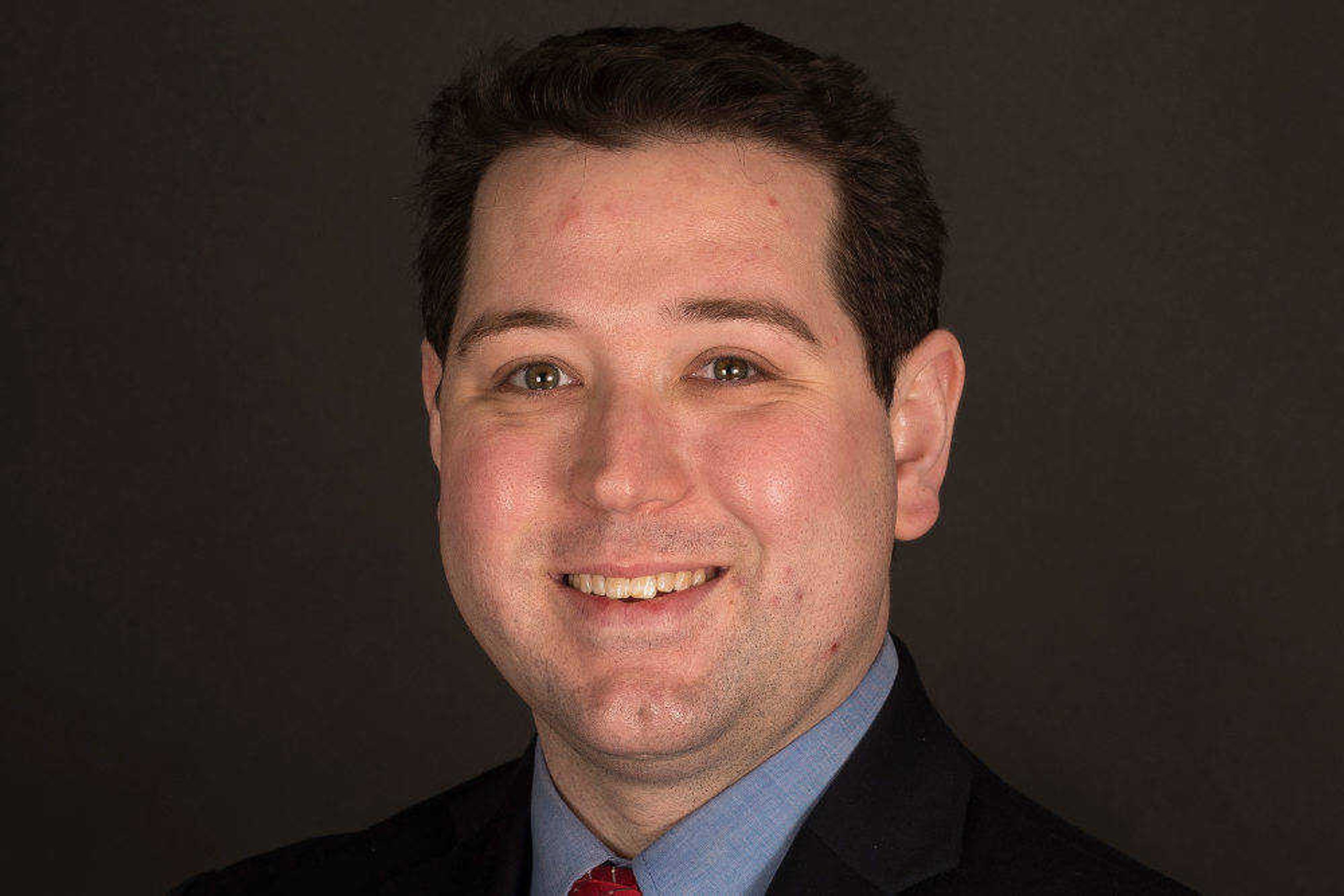Real estate roundtable provides insights on rising home prices, market shifts
Southeast Missouri's real estate market is defying national trends with rising home prices and strong demand. A recent roundtable of local experts highlights how low inventory, high mortgage rates, and a robust healthcare sector shape the market.
Southeast Missouri is outpacing state and national averages for median sale price increases as elevated mortgage rates, low inventory and high demand for homes in a certain price range continue to rise. The healthcare industry in Cape Girardeau County — and being positioned in middle America — continues to help insulate our local real estate market from some of the most drastic challenges experienced elsewhere. There are also signs that the real estate market is returning to a somewhat “normal” environment following the pandemic years when homes were barely listed before a buyer purchased the property. These were just a few takeaways from a roundtable discussion hosted in late July by B Magazine featuring three Southeast Missouri real estate agents and two mortgage bankers.
The participants
Bill Cole: Managing broker/owner of Edge Realty with more than 20 years of experience in real estate. Edge Realty has locations in Cape Girardeau, Jackson, Sikeston and Marble Hill.
Jacob Fish: The Marine veteran is a second-generation real estate professional and broker with Team Fish Realty in Cape Girardeau.
Raelenna Ferguson: Owner and broker of EPM Real Estate and Executive Property Management in Cape Girardeau who has 20 years of experience in the industry.
Christina Frazier-Moore: The vice president/mortgage sales manager for The Bank of Missouri in Poplar Bluff with 15 years of banking experience.
Monica Waldon: The mortgage loan officer has been with Montgomery Bank since 2001.
Home prices in Southeast Missouri
The Wall Street Journal reported that home values rose for the second consecutive month in June, driving the national median existing home price to $426,900. The Journal pointed to a combination of high prices, elevated mortgage rates and low inventory as contributing factors to the current state of the real estate market.
Figures from the real estate brokerage website redfin.com note that U.S. housing prices were up 4% in June 2024 from the previous year with the number of homes sold down 11.8%. Meanwhile, Missouri home prices were up 5.3% year-over-year, and the number of homes sold dropped 10.4%.
Numbers according to the MARIS MLS listing show the median home price increses outpacing both state and national increases in several Southeast Missouri communities. Jackson’s median sale price was up 11.4% in 2024, with the median sale price now at $254,000. Sikeston was also outpacing the averages up 14.4%, with a median sale price of $154,500. And Poplar Bluff was up 6.3%, with a median sale price of $159,450. Cape Girardeau was up slightly at 1.2% and a median sale price of $207,500. Dexter was the outlier with a decrease of 4.7% and a median sale price of $147,000. (Dexter lost Tyson Foods last fall when the chicken processing plant was closed, resulting in 900 workers being laid off.)
“Some of this comes down to the mix of homes that are being sold, although the median of course is right smack dab in the middle,” said Bill Cole, managing broker and owner of Edge Realty. “So yeah, it's continued to rise, but the number of months on the market has increased as well. It is slowing down. But it still is 3.4 months in Cape County, which is deemed to be a seller's market.”
Cole noted that while a $150,000 home, if priced correctly, is likely to attract quick interest, a $1 million home will take longer to sell. The higher price point naturally limits the pool of potential buyers.
Real estate broker Jacob Fish of Team Fish Realty concurred, noting it’s not just the seven-figure houses that stay on the market longer.
“That $400 [thousand] to $650 [thousand] especially right now is tougher than it has been in the last few years and that $150 [thousand] does not seem to be suffering nearly as much,” Fish said.
Fish noted that the median home price in Cape Girardeau County has increased from $176,000 in 2020 to $235,000 this year.
“It’s been very consistently increasing for that median home price, which can be good depending on how you're looking at it,” Fish said. “It can be bad if you're a first-time homebuyer or if you're just the average homebuyer looking for a slight upgrade in location or square footage, your cost of that relocation has gone up significantly in the last five years.”
Inflation is part of what’s driving home prices higher — especially through elevated mortgage rates. More on that later.
But on the good side, some increases are the result of improved amenities. The more desirable a place, the more demand. That was a point made by Charles Gascon, senior economist with the Federal Reserve Bank of St. Louis, in January at the Cape Girardeau Area Chamber of Commerce’s SEEDS Conference.
This group of realtors and bankers said demand is high, at least for a certain home price range in Southeast Missouri.
Raelenna Ferguson, owner and broker of EPM Real Estate and Executive Property Management in Cape Girardeau, said the increase in rental prices is contributing to the demand.
“As everything increased with COVID, rental prices increased,” Ferguson said. “Look at under $1,000 rentals in Cape or Jackson, it's nearly obsolete on a single-family end. It would be apartments. It’s difficult. There are some, but it's not a large quantity. When you think about that, then you think, ‘Okay, well maybe I'll just buy something.’”
Real estate website Zillow reports that in July 2024 the median rent in Cape Girardeau was $900. In July 2023, the median rent was $725.
“I think a lot of investors were sitting there with these incredibly low rates through the banks. They come up three to five years and all of a sudden they're up into 8.5%, and the rents have got to go up if they're going to cover their expenses,” Cole said.
Christina Frazier-Moore, vice president/mortgage sales manager for The Bank of Missouri in Poplar Bluff, added that rising insurance costs due to natural disasters across the state and nation are increasing real estate costs.
“Texas, California, Florida have really impacted us with insurance,” Frazier-Moore said. “I know there have been insurance companies around from the late 1800s that have closed shop. So just getting insurance is a challenge.”
Cole added that roofs, in particular, are driving insurance costs.
“Lenders are saying, I don't want it if the roof’s 10 years or older. And why would you buy a 25-year roof? Insurance companies don't want to do insurance, or they want brand-new roofs now. Why wouldn't you want to replace 10-year-old roofs everywhere, right? I'm getting in the roofing business.”
Monica Waldon, a mortgage loan officer at Montgomery Bank, said she had a personal roof experience that impacted her insurance.
“Ironically, I had an old roof and so my insurance company said, ‘I'm not going to cover your roof anymore.’ So I was like, okay, that's fine. I put on a new roof, and they increased my insurance because I had a new roof. So they wouldn't cover an old roof. And then when I put on a new roof, they said we'll cover it now, but we're going to increase your rate fairly significantly, which is unbelievable to me,” Waldon said.
Fish, who also has rental properties, said he received a letter a month ago that his insurance on a single-family property he owns would be increasing 300%. He went to another insurance provider to get a lower rate, but he was still shocked by the jump in price.
“I think that's what landlords and lots of investors are dealing with right now. Mowing costs, everything is increasing. That rental [property] at fair market value I had rented for $750 in 2019-2020. Now I’m getting $1,125, and I had multiple applicants at that price. So that's a significant increase. And obviously high demand. That rental had 26 paid applicants on that one house. And it was a two-bedroom house.”
Interest Rates
Interest rates get much of the attention these days. The last decade has seen mortgage rates move from post-recession lows to historic lows thanks to the COVID-19 pandemic. This was followed by a sharp increase in rates as the Federal Reserve fought inflation.
Many owners and new homebuyers took advantage of the historic low rates, and individuals who might consider moving to a different home are less likely to do so because of the excellent rate they locked in.
Waldon said that when young people come in and hear their rate will be 6.625%, they “freak out,” whereas older individuals realize the current rates are not far off from what’s considered standard.
“Normal is 6%. That's just the way it is. We just had 10 years of really unbelievable rates, and that's also causing all the inventory problems.”
Waldn refinanced her home three times within a year and a half and each time it was worth it.
“So people that have 2.5 [percent] to 3.5 [percent mortgage rate], they say, ‘You know what, we're just going stay tight for a while.’ And I don't blame them.”
Ferguson said if she has a buyer, she’ll call people she knows to see if they are interested in selling their home. Many individuals, she said, are not in their dream homes and would consider moving within the community. But because of the rates they secured, it’s unrealistic to consider a move.
“Not only did they go to a 2% [rate], they went to a 15-year [mortgage]. So now they're going to probably be debt free.”
Ferguson said this largely applies to homes in the $400,000 to $600,000 range and those in their mid-40s who are getting closer to becoming debt-free.
“And a lot of those people — and I'm one of them — might be willing to sell, but they don't have anywhere to go,” Waldon added. “I would love to sell my house right now because I know I can get top dollar for it. And it's going to be a difficult house to sell anyway. So now's the time to sell it, but I have nowhere to go.”
Ferguson said she’s to the point now that if she calls someone or posts on social media that she’s looking for inventory, she’ll add a line that the timeframe can be negotiable. It doesn’t have to be 30 or 45 days.
Both bankers mentioned government programs that help with lower rates, but the underwriting requirements are often very challenging, frustrating and time-consuming since they involve a third party.
Jacob Fish said he’s seen an increase in government loans coming in through offers compared to recent years.
Christina Frazier-Moore said they’ve seen more Federal Housing Administration [FHA] loans than they’ve ever seen.
“I don't want to say they have looser underwriting, because underwriting is challenging, but for credit blemishes, they're kinder on an FHA loan,” Frazier-Moore said.
FHA, VA and USDA Rural Development are the three government loans that were mentioned, with all the bankers saying they are good loans. But all three add more time to the underwriting process.
“What I'm finding is that our investors that we sell to, even nongovernment loans, the underwriting on the appraisals have become just over the top. It's just brutal. If it's not exactly like the house next door and two houses down and across the street, they don't want it,” Waldon said.
Ferguson said she had been waiting for two weeks on the underwriting of a second appraisal review. And each time they go back, it’s a minimum of 48 hours.
Fish said the government loans have requirements that act like a second inspection, which you wouldn’t see with a conventional loan. If you have three steps, for example, you have to have handrails. And no peeling paint.
“Yesterday I got two offers on a home in Scott City in the $150,000 price range, both of them FHA and so we have to have that conversation with the seller. By accepting one of these offers, you're going to have to go through and do this, and they don't have handrails, and they do have some peeling paint on the shed behind the house. We just want to know those are things that are going to have to be addressed, and you're likely going to be the one that's going to have to address it. So that’s the additional cost.”
Frazier-Moore said banks appreciate the value of experienced realtors who walk buyers and sellers through these issues before they go to an appraiser who will flag it and then hold up the sale of the home.
Cash Sales and California
Redfin reported earlier this year that in February more than 34.5% of U.S. homes were purchased with all cash, which was an increase from 33.4% a year earlier.
Cole said he looked back at the most recent 100 homes sold by his company, and 25% were all cash.
“There's a lot of cash floating around after COVID still,” he said.
During the pandemic, the number of people working remotely led to an influx of people moving to more rural areas from major metros — particularly from high-tax states. Jacob Fish said during this period, there wasn’t a week that he didn’t sell a home to someone from California. That’s started to level off, though he continues to see people move to Southeast Missouri from the West Coast.
Fish pointed to one doctor who moved here from Bakersfield, California. One of his team members is showing homes to his family members, and that will make the 17th person this doctor has helped move here from California.
“He is showing them the bottom dollar,” he said. “He is saying this is what I am now paying in taxes. This is my property tax. Here's my cost of living. Here's my gas. And especially these work-from-home people, why would you stay?”
Cole added that some may believe St. Louis prices are the same as Cape Girardeau. He disagrees.
“The numbers do not bear that out. We’re substantially lower. Which means we realtors got to work a lot harder than some in St. Louis,” Cole said.
Advice for sellers
When it comes to advice for sellers, Fish said pricing appropriately is key.
“Over the last few years, you could price higher than what your house was worth, and you would probably still get it sold. Maybe not for your listing price, but you're still going to get offers and you can get it sold. That's not the case anymore. We see people pricing too high. They think it's ’21. They think it's ’22. My neighbor sold for this, my other neighbor sold for that. So, I'm going to sell for this. And that's not working right now. You're going to sit on the market if you do that,” Fish said.
Ferguson said educating sellers that we’re not in the pandemic market is important. She said the housing market was hard to sustain during that time. There wasn’t time for photography or to put a sign in the yard. By the time the house was listed, it was sold. Now, we’re back to hosting open houses. She said it’s important to have a conversation with a realtor about how to price the home properly so you don’t have extended time on the market.
Fish added that during the pandemic, staging homes was unnecessary. Now, sellers who clean up their property are the winners when it comes to which houses get sold and how quickly.
“That work on the seller’s part and the agent’s part, that's coming far more into play,” Fish said.
How healthcare impacts real estate
Fish referenced a story from The Wall Street Journal that highlighted Cape Girardeau as one of only five U.S. metropolitan areas with positive private sector growth during 2008-2010, crediting its strong medical industry.
Cape Girardeau, despite its modest population, benefits from significant daily traffic due to its hospitals, drawing visitors who also spend at local businesses. This robust medical sector helped shield the area from the severe economic downturn seen elsewhere in 2008, especially in the real estate market. The medical industry, which has only expanded since 2008, remains a crucial economic driver for the region.
“Possibly that is a bubble,” Fish said. “But I don't see the medical bubble popping anytime in the near future. I hope one of the hospitals doesn’t tell us they're going to be closing down anytime soon. That would be a problem. But that has helped us. When the housing prices started plummeting in places like California in 2008. We didn't see that to nearly the degree that they did. And that was one of the reasons because we are kind of shielded by this very large medical industry.”
What’s next for real estate?
Fish said depending on who you listen to you’ll hear that real estate is headed for the biggest boom or bust in the next few years. He said it depends on who you listen to and what data they’re evaluating.
But generally, he said the big national trends are relatively muted in our region. In Southeast Missouri, Fish said, when there’s a huge national boom, we have a small uptick. And when the market heads south, our dip is smaller.
Frazier-Moore said she believes we won’t see a market crash considering the strict government regulations that lenders must follow. However, they are seeing an increase in credit card debt with customers. That includes individuals refinancing many times to get out of credit card debt, which is cause for concern. Ultimately, good financial education is key.
She said seeing homebuyers purchase their home, some for the first time, is exciting.
“It's more than just a transaction. We get to help these first-time homebuyers or these people get into their dream home, and it's just a magical moment.”
“I think it comes down to inflation,” Cole said. “We've got to get this under control.”
Cole said if rates were to drop to 5%, banks would see a refinance boom. The bankers agreed that 5% would be a sweet spot for rates.
Ferguson said in her interactions with individuals, they like the lower taxes this area offers - the access to St. Louis, Memphis and Nashville - and the small-town feel. Add in medical, shopping options and good schools, and she called this part of the world an “easily sellable community.”
Connect with the Southeast Missourian Newsroom:
For corrections to this story or other insights for the editor, click here. To submit a letter to the editor, click here. To learn about the Southeast Missourian’s AI Policy, click here.











